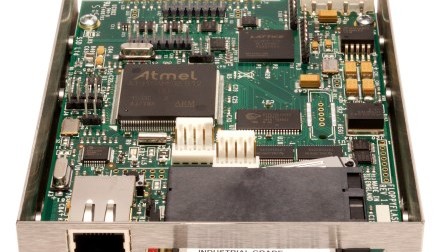Floppy drive emulator updates legacy computers
September 06, 2016
on
on

The English company Solid State Disks Ltd has developed the FLOPPYFlash floppy drive emulator, which can be used as a direct replacement for outdated electromechanical floppy disk drives in legacy computer systems. FLOPPYFlash uses standard industrial CompactFlash memory cards as a replacement for diskette media.
With the same dimensions and threaded holes as a standard 3.5-inch drive and a standard 34-pin floppy disk drive connector, the FLOPPYFlash can be mounted in place of an old 3.5-inch drive. Fitted with an adapter, it is also suitable as a replacement for larger 5.25-inch and 8-inch floppy disk drives. FLOPPYFlash also supports 26-pin and 34-pin slim and Shugart floppy drive connections. The solid state drive only needs a 5 V supply voltage. The data transmission rate can be set from 125 Kb/s to 500 Kb/s, depending on the utilized coding method (FM, MFM or MMFM). The emulated track configuration is also programmable.
FLOPPYFlash is additionally available as a network station upgrade with a pre-programmed IP address. This model comes with the FLASH2GUI graphical user interface for drive control and configuration as well as backup and restore activities.
With the same dimensions and threaded holes as a standard 3.5-inch drive and a standard 34-pin floppy disk drive connector, the FLOPPYFlash can be mounted in place of an old 3.5-inch drive. Fitted with an adapter, it is also suitable as a replacement for larger 5.25-inch and 8-inch floppy disk drives. FLOPPYFlash also supports 26-pin and 34-pin slim and Shugart floppy drive connections. The solid state drive only needs a 5 V supply voltage. The data transmission rate can be set from 125 Kb/s to 500 Kb/s, depending on the utilized coding method (FM, MFM or MMFM). The emulated track configuration is also programmable.
FLOPPYFlash is additionally available as a network station upgrade with a pre-programmed IP address. This model comes with the FLASH2GUI graphical user interface for drive control and configuration as well as backup and restore activities.
Read full article
Hide full article


Discussion (1 comment)